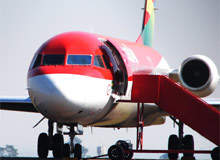
The aviation industry is a crucial element in the fabric of Europe. Aviation is not just about flying from A to B; it is also an important component in the glue that holds Europe together. The aviation industry provides large-scale employment, contributes considerably to GDP and acts as a vehicle for the introduction of new technologies in other fields. Secondary effects of the aviation industry are felt throughout society as a whole.
Air transport has not become one of the safest forms of transport by chance, but through the long, patient work of regulators and their industry counterparts. However, recent events in the form of security risks and adverse economic circumstances have shown that our sector remains fragile.
CROSS-BORDER COOPERATION
The European air transport industry has been extensively liberalised, but further measures are required if it is to become a true cross-border industry.
The EU has contributed through its Europe-wide competences, time-tested decision-making and enforcement mechanisms, and it has tackled many important issues. As well as liberalising the industry, considerable progress has been made on safety, airports, air traffic management and airframes.
See Also:
UNEVEN PROGRESS
How well do you really know your competitors?
Access the most comprehensive Company Profiles on the market, powered by GlobalData. Save hours of research. Gain competitive edge.

Thank you!
Your download email will arrive shortly
Not ready to buy yet? Download a free sample
We are confident about the unique quality of our Company Profiles. However, we want you to make the most beneficial decision for your business, so we offer a free sample that you can download by submitting the below form
By GlobalDataDespite all these successes, progress has been piecemeal. There are still gaps, overlaps and inconsistencies in the system, and the interface with previous regulations is not always as clean as we would like it to be.
As a result of this gradual approach, we now have a regulatory landscape influenced by a mixture of EU member states and international organisations, all with their own varying approaches.
The member states have legal powers, but lack the ability to implement policies efficiently across Europe’s borders. The international organisations act naturally as cross-border forums, but they lack legislative and enforcement powers. Only the EU system combines the two, but it is not always consistent. The present system is complicated, costly and may lead to ill-defined responsibilities.
THE CHALLENGE
We must streamline the regulatory structures to avoid inefficiency and bureaucracy. And we must develop a consistent and effective framework for aviation regulation that makes use of all available competencies, that understands the needs of the aviation industry as a whole and that is responsive to the various stakeholders.



